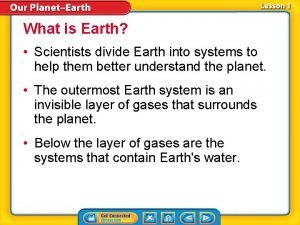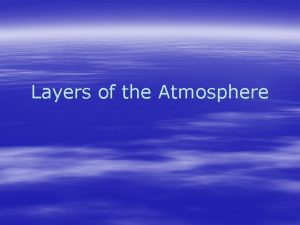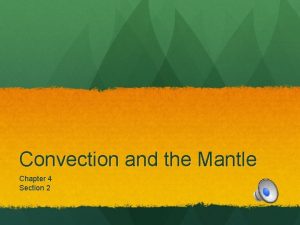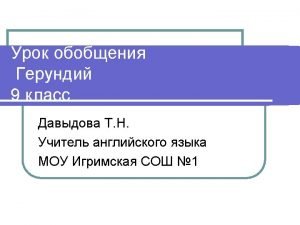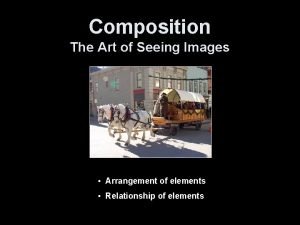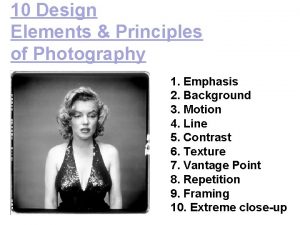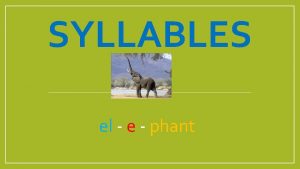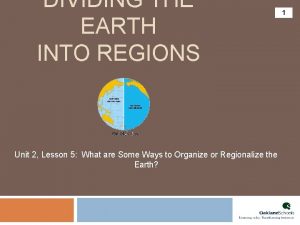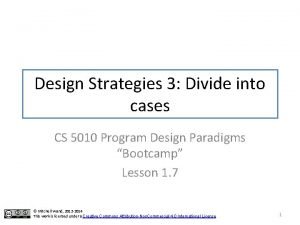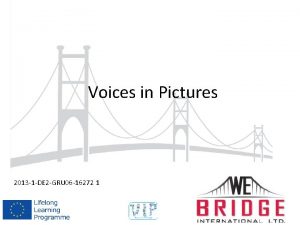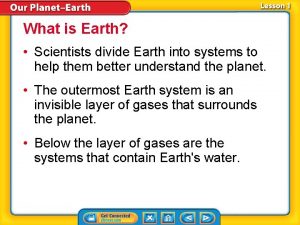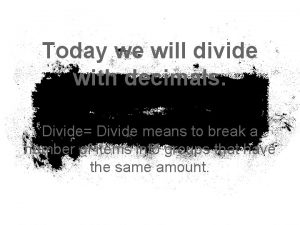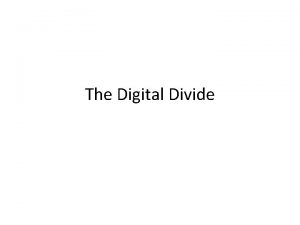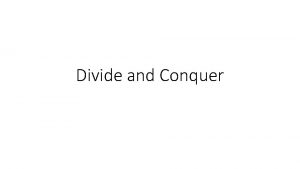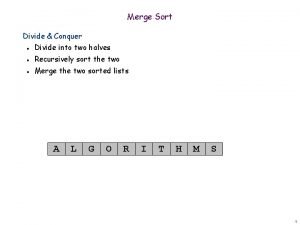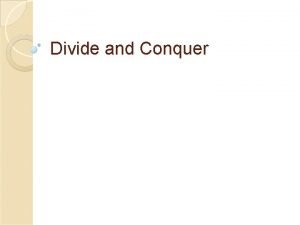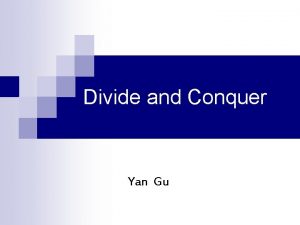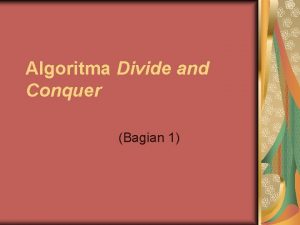What is Earth Scientists divide Earth into systems













- Slides: 13

What is Earth? • Scientists divide Earth into systems to help them better understand the planet. • The outermost Earth system is an invisible layer of gases that surrounds the planet. • Below the layer of gases are the systems that contain Earth's water.

What is Earth? (cont. ) • The next system is the solid part of Earth, which contains a thin layer of soil covering a rocky center. • The Earth system that contains all living things is the biosphere.

The Atmosphere Earth’s gravity pulls gases into a layer surrounding the planet. This layer is called the atmosphere from Greek atmos-, means “vapor”; and Greek spharia, means “sphere”

The Atmosphere (cont. ) The atmosphere contains a mixture of nitrogen, oxygen, and smaller amounts of other gases.

The Atmosphere (cont. ) Thermal energy from the Sun heats the atmosphere; however, different parts of the atmosphere absorb or reflect this heat in different ways.

The Atmosphere (cont. ) • In the bottom layer of the atmosphere, called the troposphere, temperature decreases as you move upward from Earth’s surface. Gases flow and swirl in the troposphere, causing weather. • The stratosphere is above the troposphere. In the stratosphere, gases are more stable and form flat layers.

The Atmosphere (cont. ) • The mesosphere is above the stratosphere. In the mesosphere, the air temperature decreases with increasing altitude. • Temperatures increase again as you move further from Earth’s surface through the next layer, thermosphere. • The outer layer of Earth’s atmosphere is the exosphere.

The Hydrosphere • The system containing all Earth’s water is called the hydrosphere. • The water in the hydrosphere changes state and is found as a liquid, a solid, and a gas on Earth.

The Cryosphere • The frozen portion of water on Earth’s surface is called the cryosphere. • The cryosphere consists of snow, glaciers, and icebergs. • About 79 percent of the planet's freshwater is in the cryosphere.

The Geosphere • The geosphere is the solid part of Earth, which includes a thin layer of soil and broken rock material along with the underlying layers of rock. • Minerals are naturally occurring, inorganic solids that have crystal structures and definite chemical compositions.

The Geosphere (cont. ) • A rock is a naturally occurring solid composed of minerals and sometimes other materials such as organic matter. • There are three major rock types: igneous, sedimentary, and metamorphic.

The Geosphere (cont. ) The three basic layers of the geosphere are the crust, mantle, and core. Each layer has a different composition.

The Geosphere (cont. ) • The crust is the brittle outer layer of the geosphere. It is much thinner than the inner layers and is made of rock. • The middle and largest layer of the geosphere is the mantle, made of rocks that are hotter and denser than those in the crust. • The center of Earth is the core, made mostly of metal iron and small amounts of nickel.
 Scientists divide the atmosphere into how many layers?
Scientists divide the atmosphere into how many layers? First layer of atmosphere
First layer of atmosphere Scientists think that convection currents flow in earth's *
Scientists think that convection currents flow in earth's * Why do historians divide texas history into eras?
Why do historians divide texas history into eras? Which is correct
Which is correct Imaginary lines drawn to divide the image into thirds
Imaginary lines drawn to divide the image into thirds One syllable latin words
One syllable latin words Design principles in photography
Design principles in photography How many syllables in snake
How many syllables in snake How to divide the world into regions
How to divide the world into regions Division into cases example
Division into cases example Divide the following adjectives into positive and negative
Divide the following adjectives into positive and negative Roots and affixes definition
Roots and affixes definition The three coordinate planes divide the space into
The three coordinate planes divide the space into
